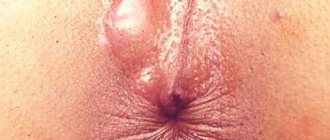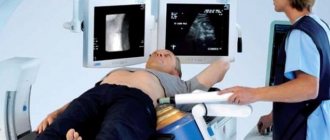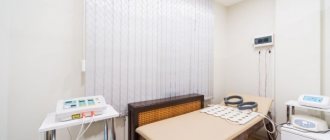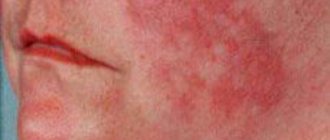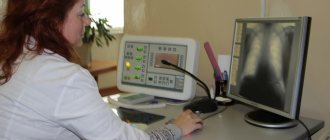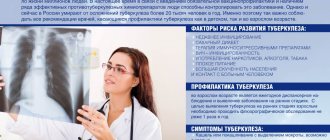You have probably encountered a doctor’s requirement to undergo a preventive fluorographic examination annually. Not a single medical examination or hospitalization can be done without this. What is its importance?
Fluorography has become widespread as a quick diagnosis of pulmonary tuberculosis and pneumonia. The images provide the doctor with important information about the size, shape, and anatomical location of internal organs - such as the heart, lungs, bronchi, and mediastinal organs. Changes in the normal structure of these organs may indicate disease.
It is believed that fluorography is a low-informative study, but its results will show serious changes in lung tissue. Some signs of pathologies and life-threatening conditions can also be detected as a result of fluorography.
Chest fluorography is a procedure with very low, tiny health risks:
- The level of radiation used in modern devices is minimal and does not have long-term negative consequences.
- However, the study is recommended to be carried out, as before, no more than once a year.
- Doctors recommend that pregnant women refrain from examinations.
What can you see on fluorography?
In a fluorographic image, the doctor sees a black and white image of the chest and internal organs. The organs of the chest absorb radiation differently, so the picture on the image is heterogeneous. The heart and bronchi appear as light spots; a white shadow from the heart is visible in the center of the fluorogram. Hollow structures (lungs) appear dark, while dense ribs and clavicles appear light. If the lungs are healthy, their tissue looks homogeneous.
What can a doctor detect?
- An increased heart size may indicate heart failure or cardiomyopathy.
- The accumulation of fluid (effusion, blood) is an important symptom that requires further diagnosis.
- Bone fractures.
- Tumors.
- Granulomas may indicate tuberculosis.
- Pulmonary edema.
- Other pathologies.
Chest fluorography should be distinguished from x-rays. The last diagnostic method is used according to the doctor’s indications.
Both fluorographic and x-ray examinations of the lungs are a simple, fast and effective diagnostic method that has been helping doctors prevent and diagnose diseases for several decades.
FAQ about Fluorography
According to epidemiological indications (regardless of the presence or absence of signs of tuberculosis), preventive medical examinations are carried out 2 times a year:
– military personnel undergoing military service upon conscription; – persons in contact with sources of tuberculosis infection, including persons accompanying foreign citizens with tuberculosis; – persons removed from dispensary registration in medical anti-tuberculosis organizations due to recovery, during the first 3 years after deregistration; – persons who have had tuberculosis and have residual changes in the lungs, during the first 3 years from the moment the disease was diagnosed; – HIV-infected; – patients registered with drug treatment and psychiatric institutions; – persons who are members of the preventive drug treatment group in connection with the use of psychoactive substances and drugs; – persons under investigation held in pre-trial detention centers and convicts held in correctional institutions; – persons released from pre-trial detention centers and correctional institutions during the first 2 years after release; – persons who, by the nature of their professional activities, have contact with the contingent of persons under investigation and convicts; – persons without a fixed place of residence.
According to epidemic indications (regardless of the presence or absence of signs of tuberculosis), preventive medical examinations are carried out once a year:
– patients with chronic nonspecific diseases of the respiratory system, gastrointestinal tract, and genitourinary system;
– patients with diabetes mellitus;
– patients with oncohematological diseases;
– persons receiving corticosteroid, radiation and cytostatic therapy, TNF-a blockers, genetically engineered biological drugs;
– foreign citizens and stateless persons, including those carrying out labor activities on the territory of the Russian Federation, refugees, internally displaced persons;
– persons living in stationary social service institutions and social assistance institutions for persons without a fixed place of residence and occupation;
– employees of social service institutions for children and adolescents;
– employees of sanatorium-resort, educational, health and sports institutions for children and adolescents;
– employees of medical organizations;
– employees of social service organizations for the elderly and disabled;
– employees of organizations processing and selling food products, including milk and dairy products, organizations of consumer services, workers of water supply facilities;
non-transportable patients (examination is carried out using sputum microscopy).
The following undergo an extraordinary preventive medical examination for tuberculosis:
– persons who applied to medical organizations for medical assistance with suspected tuberculosis;
- persons who sought medical care in outpatient clinics, admitted for inpatient treatment, and persons admitted to children's medical organizations for the purpose of caring for children undergoing inpatient treatment, if more than a year has passed since the date of the last preventive examination for tuberculosis ( in case of emergency admission of patients for inpatient treatment, preventive examination for tuberculosis, if possible, is carried out in a hospital setting);
– persons from the environment of children with changes in sensitivity to tuberculin (“virgin” children), if more than 6 months have passed since the last fluorographic examination;
– persons coming from other territories of the Russian Federation for employment, permanent or temporary residence, if more than a year has passed since the last fluorographic examination;
– persons living together with pregnant women and newborns, if 1 year or more has passed since the previous fluorographic examination at the time of birth;
– citizens conscripted for military service or entering military service under a contract, if more than 6 months have passed since the last examination;
– persons who have been diagnosed with HIV infection for the first time, if more than 6 months have passed since the last examination, as well as those infected with HIV in the stage of secondary manifestations (4A-4B) or infected with HIV with a low level of CD4 lymphocytes (less than 350 cells/ µl);
– applicants upon admission to study, if 1 year or more has passed since the date of the last preventive examination for the purpose of early detection of tuberculosis;
– persons without a fixed place of residence – for any application to social protection or health care institutions, if there is no information about undergoing a preventive examination for tuberculosis or more than 6 months have passed since the last examination;
– persons who use psychoactive substances and drugs that are not included in the group of preventive drug treatment registration – when identified by employees of internal affairs bodies, in the absence of information about preventive examinations for tuberculosis over the past year;
– foreign citizens and stateless persons when applying for a temporary residence permit on the territory of the Russian Federation, residence permit, citizenship or work permit in the Russian Federation.
– The annual coverage of the population aged 15 years and older with preventive X-ray fluorographic studies should be at least 65% of the population,
Digital or film?
Modern digital fluorography is safer for human health than x-rays or traditional film. With a digital type of examination, the radiation exposure to the patient and the doctor is minimal, and the diagnostic capabilities are sufficient to conduct a preventive examination. However, if you are pregnant or do not exclude this possibility, it is better for you to discuss this with your doctor before undergoing fluorography.
Based on the results of the study, the radiologist may recommend an X-ray examination of the chest organs for further diagnosis and evaluation of pathological foci. The appointment may indicate the need to take photographs in frontal and lateral projections.
Do you need a quick fluorography in Moscow? Come to us! The cost of paid fluorography is 1800 rubles. Still have questions? Call! +7 (495) 120-08-07.
Differences between fluorography and x-rays
Fluorography is a type of x-ray examination that differs from the classical x-ray method in the radiation dose and image resolution. During fluorography, a lower radiation dose is used than during an x-ray examination (approximately 1.5 times), but this affects the resolution of the image - the quality is only enough to suggest the presence of pathology.
The radiation exposure from digital FGL devices is 3-5 times less than from film devices.
If the results of fluorography reveal a deviation from the norm, it is necessary to conduct additional studies, including the use of X-ray equipment.
How is it carried out?
The X-ray room has a moving camera with a large metal plate. For an accurate diagnosis during fluorography, you will be asked to stand in front of the plate, turn your shoulders forward, take a deep breath, hold your breath for the duration of the exposure and do not move. This will allow you to get a clear image without blur. The x-ray technician or radiologist will tell the patient how to stand up correctly and when to hold his breath.
Is it possible to perform fluorography in clothes?
You can undergo fluorography in a T-shirt or shirt, but do not forget to check your chest pocket. It is recommended to remove jewelry and metal objects from the chest - this may make it difficult to evaluate the image. For the same reason, women are recommended to undergo the study without a bra.
Fluorography of the chest is completely painless and is not felt at all. And after it is done, you do not need to follow any doctor’s recommendations.
Indications
FGL is carried out to detect bronchopulmonary diseases in the early stages. Fluorography is prescribed in the following cases:
- Regular preventive examination to detect tuberculosis;
- Suspicion of inflammation in the lungs;
- Suspicion of tumor diseases of the lungs, heart and blood vessels;
- The need to determine changes in lung tissue and the formation of cavities;
- To detect foreign bodies in the chest.
In addition, fluorography is prescribed for people living with pregnant women and newborn children.
Laboratory diagnostics
Laboratory tests can determine the presence of certain bacteria, viruses or fungi in the human body. To do this, blood, a nasopharyngeal swab, urine, etc. are taken from the patient. A sample of the biomaterial is examined using special equipment. Using laboratory diagnostics, blood composition, various biomarkers, antibodies, etc. are determined.
The purpose of clinical analysis of sputum from the trachea, bronchi and lungs is to identify which pathogenic organisms in the human respiratory tract provoke the formation of mucus and leukopenia. Normally, a healthy person does not produce sputum when coughing.
When analyzing, the laboratory doctor also takes into account other factors, for example, the amount and color of sputum. Sputum may contain pus (clumps of leukocytes), blood, and inflammatory exudate.
If sputum examination under a microscope does not reveal bacteria or other pathogens, this does not mean there is no infection. In this regard, the patient may be recommended additional examination.
Contraindications
FGL is a quick and painless technique that does not require special preparation. However, there are categories of people who are not prescribed FGL:
- Pregnant and lactating women;
- Children under 15 years of age;
- Bedridden patients who are unable to maintain an upright body position;
- Patients with respiratory failure;
- People suffering from claustrophobia.
It is worth noting that in some cases, for special indications, fluorography is performed during pregnancy. The study is performed under the supervision of a physician. If the pregnancy is before 25 weeks, the woman wears a special apron that covers the lower part of the body. Also, if necessary, FGL is prescribed to adolescents aged 16-18 years.
